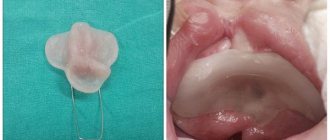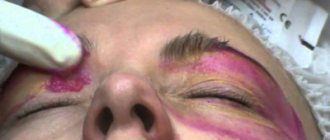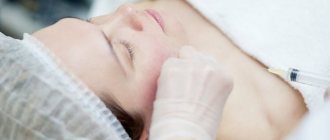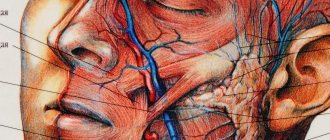Any woman who has resorted to lip correction with fillers, tried to correct the shape with tattoos, or tried lip augmentation with pepper is well aware that all of these are temporary or not entirely acceptable from an aesthetic point of view. In this regard, lip plastic surgery (cheiloplasty) has become a popular and actively developing area of aesthetic surgery. Using different surgical techniques you can:
- make lip augmentation;
- get a 3D effect;
- get rid of asymmetry;
- correct deficiencies caused by aging (ptosis of the tissues of the lower third of the face);
- remove traces of surgical interventions or injuries;
- correct congenital anomalies.
- smooth out facial wrinkles near the mouth;
Professional recommendations for lip augmentation, making them plump and rejuvenating the area around the mouth can be obtained in a specialized clinic where there is a plastic surgery department and experienced surgeons. Some centers operate with a laser, but the possibility of using a laser scalpel has a very significant impact on the final cost of cheiloplasty.
Reasons for surgery to remove biopolymer
Currently, one session of introduction by an experienced cosmetologist of biologically degradable fillers based on hyaluronic acid is a fast and, most importantly, safe cosmetological method of increasing volume. However, just a few years ago, biopolymer gels, or biogels based on silicones of synthetic origin, which are not subject to biological degradation, destruction in tissues and resorption, were used for these purposes. Manufacturing companies positioned these products as highly effective in terms of lasting and long-term cosmetic results.
And although the initial results did seem quite successful, most patients after a while began to complain of numerous complications. These were multiple compactions in the tissues, the occurrence of their deformation and asymmetry, difficulties in articulation (pronunciation of individual sounds), etc. At the same time, removing the biopolymer from the lips without surgery in order to eliminate these negative consequences is impossible.
How to prepare for surgery
To start preparing for cheiloplasty, you need to consult with several specialists and choose “your” surgeon. The first consultation is usually free; during a conversation with the doctor, you can ask any questions about the course of the intervention, safety measures and the postoperative period. After listening to the wishes, the doctor examines the tissue and offers correction options, listing all the pros and cons. It’s a good idea to consult with an otolaryngologist and an orthodontist in parallel - the knowledge of specialists who are well versed in the physiology of the nose and jaws will allow you to achieve an ideal result.
When the decision on the method of lip augmentation has been made, you need to undergo a preoperative examination. It includes standard tests to detect infections, allergies and other contraindications. The recommendation of plastic surgeons is to refuse cheiloplasty in case of a tendency to form keloid scars, with reduced immunity and blood disorders. Women carrying a child should wait until the end of the lactation period. If the examination reveals no contraindications, a date for surgery is set.
Indications and contraindications
Indications for removing biopolymer from the lips can be separated into a separate list:
- lip deformation;
- asymmetry;
- unnatural appearance;
- local compactions in the mouth area;
- dissatisfaction with the result;
- desire to return to its previous appearance;
- desire to use a different method.
Contraindications to biopolymer removal are as follows:
- cardiovascular diseases;
- poor blood clotting;
- oncological diseases;
- diabetes;
- any inflammatory processes and diseases in acute form;
- deviations from the norm in laboratory test results;
- mental disorders, panic attacks, anxiety disorders;
- minor age.
What are biogels?
Permanent gel is a suspension in liquid of microscopic particles of such groups of chemical biopolymers as:
- polyacrylamide;
- various modifications of silicone;
- polytetrafluoroethylene;
- other classes of chemical compounds.
All of them are biologically inert, that is, they do not take part in tissue metabolic processes and do not lead to an immune reaction of rejection. After being introduced under the skin, biopolymers do not undergo destruction in tissues, as a result of which the cosmetic effect lasts for an average of about 5 years.
Biopolymers have gained great popularity due to the technical simplicity of their use and the long-lasting results, combined with the low price of the drugs. However, due to the lack of biodegradation (self-resorption) of these chemical compounds in tissues, in the event of adverse consequences, the biopolymer can only be removed from the lips surgically. Such complications that require surgical removal of the biopolymer from the lips are the following conditions:
- Chronic inflammatory processes. They can occur after a certain time (even a long time) after the administration of the drug, the presence of which creates the appropriate conditions for this. Inflammation can be either aseptic in nature (the body’s reaction to a foreign body) or as a result of infection through the hematogenous or lymphogenous route. The degree of inflammation can range from minor swelling, a feeling of fullness and pain, up to the development of a purulent process, accompanied by a serious condition.
- Formation of conglomerates of the introduced substance. After injection of filler, it may not be distributed evenly, but in lumps of various shapes and sizes. The result of this is the occurrence of aesthetic defects and difficulty in adequate articulation, which is especially important for persons in public professions (artists, singers, announcers, etc.).
- Migration of biopolymer gel. Under the influence of age-related changes in the face, accompanied by gravitational ptosis of tissues, the functioning of the masticatory and facial muscles, it is possible to divide the injected substance into small fragments and move them through the tissues even beyond the injection site - to the cheekbones, cheeks and chin. This leads to deformation of facial contours and dysfunction of facial muscles.
- Development of fibrous tissue, or scarring. This phenomenon is the most common and widespread complication of the use of injectable cosmetic biopolymers, in which surgery to remove the gel from the lips becomes a necessity and the only method of treatment and correction. Fibrosis is further aggravated by inflammatory processes. The proliferation of connective tissue and the formation of internal scars is a protective reaction of the body aimed at isolating fragments of a foreign body. As a result of this, so-called seliconomas, or heliomas, are formed, which are particles of biogel covered with a dense connective tissue membrane. However, fibrous tissue causes deformation of the red border and stiffness of the lips, their protrusion and the appearance of asymmetry, and proliferation of the mucous membrane. In addition, scars, squeezing blood vessels, lead to even greater scarring, changes in natural coloring and, in some cases, to the development of areas of tissue necrosis.
Read related articles:
- Complications after contouring
- Cheiloplasty and bullhorn
How is surgery performed?
On average, lip surgery lasts about an hour, the duration depends on the tasks. Sometimes patients choose a combination option, for example, rhinoplasty with one-stage correction of the upper lip.
- Anesthesia is administered.
- Markings are applied.
- The surgeon makes incisions in the places provided by the chosen technique. The most popular varieties are Bulhorn for lifting the upper lip, Corner lift for age-related ptosis and wrinkles, Kesselring surgery for lip augmentation for age-related loss of volume, and VY plastic for asymmetry and loss of plumpness. Experienced and highly qualified surgeons use proprietary techniques, which are improved versions of well-known techniques.
- Tissue redistribution is performed and excess is excised.
- Stitches are applied.
- Ice is applied to the surgical area to minimize swelling.
As for lipofilling, this type of lip surgery should not be considered an outpatient procedure. Correction with autologous fat (your own fat from the abdomen or other areas) is carried out in the operating room, using adequate anesthesia, and requires mandatory preparation.
After the operation, the patient can leave the clinic on the same day, immediately after the anesthesia wears off.
How to remove biopolymer from lips
The volume, complexity and duration of surgical intervention to remove the biopolymer from the lips depend on the number of fragments of the substance, their location, prevalence and degree of adhesions. The type of anesthesia—local anesthesia or general anesthesia—depends on the same circumstances. Technically, the operation consists of two stages:
- removing, as completely as possible, fragments of the helium mass;
- correction of developed disorders of both aesthetic and functional nature.
In some clinics, biopolymer is removed from the lips using a laser or radio waves, which makes it possible to somewhat reduce bleeding and facilitate visual inspection of the surgical field, as well as excise scar tissue with less trauma. However, this is not of fundamental importance for the process of treatment and correction.
The incision to remove the biopolymer from the lips is made not on the skin, but along the mucous membrane of the lip, that is, on the inner surface of the latter, which reduces the risk of damage to large blood vessels and muscles, as well as hides postoperative scars and obtains a satisfactory aesthetic result. However, in cases of distant migration of the gel, it may be impossible to avoid additional incisions on the facial skin. At the second stage, scars and hypertrophied areas of the mucous membranes of the lips are removed, the maximum permissible restoration of the shape and contours of the latter is carried out, and cosmetic sutures are applied.
It is practically impossible to completely remove all particles of biopolymer.
Therefore, after removal of the biopolymer, due to the continued growth of connective tissue, the lips may become deformed again. In this regard, rehabilitation after surgery should include a course of treatment, which includes proteolytic enzymes and physiotherapeutic procedures.
Due to the good and rapid regeneration of the mucous membrane, the recovery period after removal of the biopolymer is, as a rule, no more than 1.5 - 2 weeks, subject to the surgeon’s recommendations - proper care of the postoperative wound, avoiding the consumption of hot food and alcoholic beverages, smoking , physical activity, visiting baths, etc.
After complete healing, if necessary, it is possible to carry out additional surgical correction, and after a few months, if the patient wishes, cosmetic correction by introducing a filler based on hyaluronic acid.
Operational types of correction of deficiencies
There are two main directions in lip surgery: surgical plastic surgery and contouring.
- Cheiloplasty (circular)Plastic surgery on the lips is indicated for patients with serious problems. With the help of cheiloplasty, you can make dramatic changes, for example, reduce the upper lip, lift drooping corners, remove scars and tumors, correct the unsightly consequences of lip augmentation with a biopolymer composition, and so on.
- Lip contouring. (anchor breast lift)
Correction using fat transplantation provides a long-term effect, and lip plastic surgery with biogels provides results for several months. For example, lips after augmentation with hyaluronic acid need to be adjusted every six months to a year. As for surgical plastic surgery, the visual effect lasts for many years.
Which lip correction to choose - temporary or permanent?
Despite the need for preoperative preparation, invasiveness and rehabilitation, methods of surgical correction and lip augmentation are gaining more and more adherents. There are a number of objective reasons for this, including a long-term or lifelong effect and a natural result. But what type of intervention to choose - surgical lip surgery or contour correction with fillers - is decided by the patient himself.
In some cases, only surgery is indicated. Thus, in case of congenital defects, reconstructive surgery must be performed (plastic surgery of the frenulum of the upper lip in a child or adult patient, correction of cheiloschisis in infants, and so on). In aesthetic terms, surgical methods eliminate the undesirable effect often associated with injections. For example, when a small area of tissue under the base of the nose is excised, the distance between it and the upper vermilion border is reduced. At the same time, the lips acquire the desired volume and natural shape without vulgar excesses.










